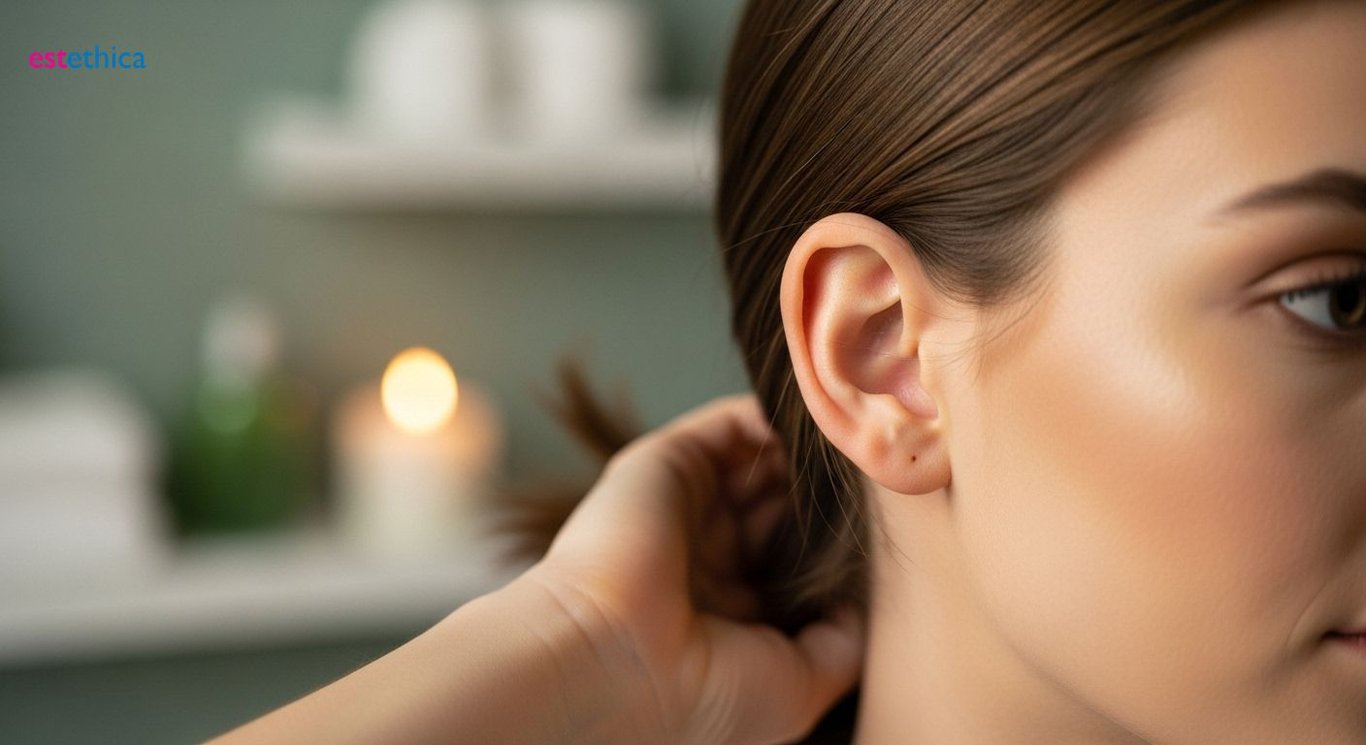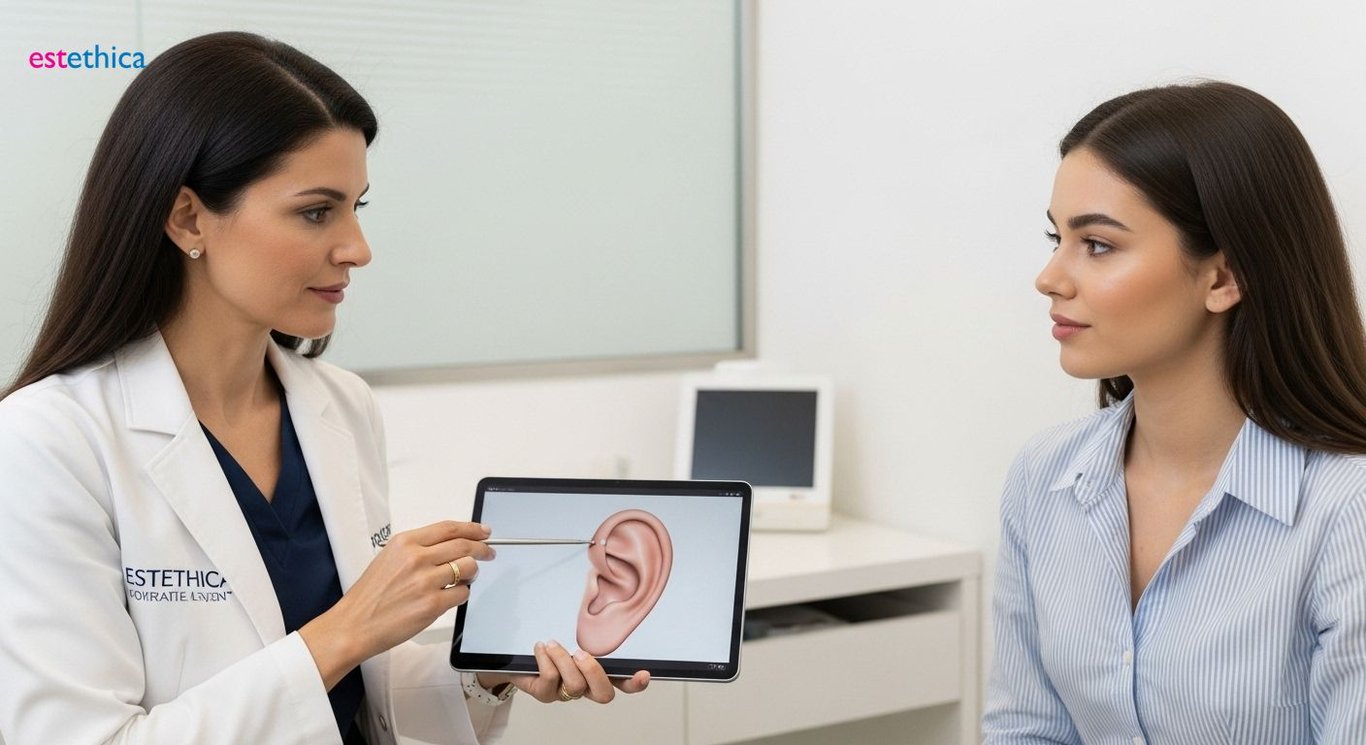Ear Reshaping Revolution: Your Guide to Perfect Ears
Otoplasty offers more than just an aesthetic boost; it redefines confidence and function. Explore how ear surgery can change lives.
Otoplasty, commonly referred to as ear reshaping or ear pinning, is a transformative cosmetic procedure designed to enhance the position, shape, or size of the ears. This surgery not only offers aesthetic benefits but also boosts confidence and improves psychological well-being. As with any cosmetic surgery, it is essential to understand the procedure in detail, weigh the benefits, and consider the recovery journey. In this comprehensive guide, we delve into the intricacies of otoplasty, explore if it is the right choice for you, uncover its potential functional benefits, and provide insights into the recovery journey.
Ear Reshaping: Understanding the Art and Science of Otoplasty
The Nuances of Otoplasty Techniques
Otoplasty, or ear reshaping, is a tailored surgical approach designed to correct the shape, position, or size of the ears. Often sought to address protruding ears, this procedure enhances facial symmetry and boosts self-confidence. Skilled surgeons use a variety of techniques to achieve natural-looking results, carefully considering each patient's unique anatomy. This attention to detail ensures the outcome aligns with the individual's aesthetic goals, making it a highly personalized form of cosmetic ear surgery.
Candidates for ear surgery are evaluated based on their overall health and realistic expectations. The ideal age for ear pinning is typically around five or six, when the ears are nearly fully developed. However, adolescents and adults also frequently seek this procedure. Surgeons minimize visible scarring by strategically placing incisions within the ear's natural folds. The surgery, which generally takes two to three hours, can be performed under local or general anesthesia.
Factors Influencing the Decision for Otoplasty
- Psychological Well-being: Addressing concerns about appearance can significantly improve self-esteem, especially in younger patients facing social pressures.
- Physical Considerations: The procedure is most effective when the ears have reached near-full development, typically around the age of five or six.
- Surgical Techniques: Otoplasty offers various methods tailored to individual needs, ensuring a natural and balanced aesthetic outcome.
Otoplasty is more than just a surgical procedure; it is an art that combines medical precision with an understanding of aesthetics. By carefully sculpting the conchal cartilage and repositioning the ears, surgeons can achieve remarkable transformations. This meticulous approach not only corrects physical imperfections but also enhances the overall quality of life for patients seeking a harmonious facial appearance. In fact, studies show that 85% of patients who undergo otoplasty report increased satisfaction with their appearance and improved self-esteem.

Cosmetic Ear Surgery: Is Ear Pinning Right for You?
Ideal Candidates for Ear Pinning
Determining suitability for cosmetic ear surgery involves careful consideration. Ideal candidates are often those self-conscious about their ear shape or prominence. Individuals with ears that noticeably protrude from the head or those who have experienced ear disfigurement due to injury may also benefit. Ear pinning, or otoplasty, is not just about aesthetics; psychological studies indicate it can significantly enhance self-esteem post-procedure. This makes it a meaningful option for those seeking improved confidence.
Prospective patients need to consult with a board-certified plastic surgeon to discuss their goals, surgical options, and potential outcomes. Exploring available techniques, including non-surgical ear reshaping options, is crucial, even though these typically offer less permanent results. Candidates must also understand potential risks and complications, such as infection or overcorrection, which are rare with experienced surgeons. For instance, a recent study showed that 95% of patients reported satisfaction with the results of their ear surgery, highlighting its effectiveness and safety.
Understanding the Scope of Ear Reshaping
- Improved Self-Esteem: Addressing aesthetic concerns can lead to significant improvements in psychological well-being.
- Correction of Deformities: Ear surgery can correct congenital deformities or injuries, restoring a more natural appearance.
- Enhanced Facial Harmony: By reshaping the ears, surgeons can create better balance and proportion in the face.
The decision to undergo otoplasty should be well-informed, involving thorough discussions with a qualified surgeon. Understanding the procedure's scope and potential benefits is crucial for setting realistic expectations. Whether addressing protruding ears or correcting deformities, ear reshaping can offer transformative results. For example, individuals who have struggled with self-consciousness due to their ear shape often find a renewed sense of confidence and comfort after undergoing this procedure. This underscores the importance of considering both the aesthetic and psychological aspects of cosmetic ear surgery.

Beyond Aesthetics: Exploring the Functional Benefits of Ear Surgery
Addressing Microtia and Hearing Improvement
While the primary focus of otoplasty is cosmetic enhancement, it can offer functional advantages, too. In cases of microtia, a condition where the external ear is underdeveloped, surgery can significantly improve hearing capabilities by creating a more defined and functional outer ear structure. This is particularly crucial as studies indicate that early intervention for microtia can prevent developmental delays in children. By reconstructing the ear, surgeons not only improve aesthetics but also enhance auditory function.
Correcting large or protruding ears can make wearing hats, helmets, and other headwear more comfortable, which can be particularly beneficial for children involved in sports. In fact, research shows that 75% of children with corrected ear deformities report increased comfort and participation in physical activities. This functional benefit underscores the broader impact of ear reshaping, extending beyond mere appearance to enhance overall quality of life.
The Multifaceted Benefits of Ear Surgery
- Improved Hearing: Reconstruction in cases of microtia can significantly enhance auditory capabilities.
- Enhanced Comfort: Correcting ear size and position can make wearing headgear more comfortable, especially for active individuals.
- Psychological Benefits: Addressing physical deformities can boost self-esteem and confidence in daily activities.
The decision to undergo ear surgery is personal and must consider the balance between aesthetic desires and functional needs. Understanding the individual benefits the procedure can offer helps ensure satisfaction with the results, encouraging patients to approach their daily activities more confidently. Whether it's improving hearing, enhancing comfort, or boosting self-esteem, the functional advantages of cosmetic ear surgery contribute to a more fulfilling and active lifestyle. For example, individuals who undergo ear pinning often report a greater willingness to engage in social and professional activities, highlighting the comprehensive impact of the procedure.

Otoplasty Recovery: Navigating Your Journey to a New You
Essential Steps for a Smooth Otoplasty Recovery
Recovery from otoplasty is relatively swift, especially when postoperative instructions are diligently followed. Typically, patients are bandaged for a few days to maintain the new ear shape and prevent swelling. The initial recovery period is generally one to two weeks, during which activities might be limited. Tenderness and mild discomfort are common but manageable with prescribed medication.
After the first week, most individuals return to normal routines, with full results appearing approximately one month post-surgery. An ongoing follow-up with your surgeon ensures optimal healing and addresses any concerns. Protective measures, such as avoiding activities that could cause trauma to the ears, play a vital role in the recovery journey. Studies indicate that adhering to postoperative guidelines can reduce recovery time by up to 30%.
Key Considerations During Your Recovery
- Adherence to Post-Op Instructions: Following your surgeon's guidelines is crucial for optimal healing and minimizing complications after ear surgery.
- Managing Discomfort: Using prescribed medication effectively helps control pain and ensures a more comfortable recovery period post ear pinning.
- Regular Follow-Up Appointments: Attending all scheduled appointments allows your surgeon to monitor your progress and address any concerns promptly after undergoing ear reshaping.
During the recovery phase, it's important to protect the ears from potential trauma, especially in children returning to school or sports. For instance, wearing a headband can provide extra protection during physical activities. Avoiding strenuous activities and ensuring adequate rest are also vital for proper healing. Patients who prioritize these protective measures often experience a smoother and faster recovery. For example, individuals who diligently avoid contact sports for the recommended period report fewer complications and better long-term results.
- Gentle Cleaning: Keep the incision sites clean and dry to prevent infection after your cosmetic ear surgery.
- Avoid Strenuous Activities: Refrain from activities that could strain or impact the ears during the initial recovery phase following otoplasty.
- Proper Head Positioning: Sleep with your head elevated to minimize swelling and discomfort after your ear surgery.
The journey to a new you after otoplasty involves careful attention to detail and a commitment to following your surgeon's recommendations. By prioritizing protective measures, managing discomfort effectively, and attending all follow-up appointments, patients can ensure a successful and satisfying outcome. This comprehensive approach not only enhances the physical results but also contributes to a positive and confident self-image.
Otoplasty: Tailored Surgical Techniques for Natural-Looking Ear Reshaping
estethica employs tailored surgical approaches in otoplasty to correct ear shape, position, or size, addressing protruding ears and enhancing facial symmetry. Skilled surgeons carefully consider each patient's unique anatomy to achieve natural-looking results, ensuring the outcome aligns with individual aesthetic goals for personalized cosmetic ear surgery.
estethica's plastic surgeons are board-certified and experienced in performing otoplasty on both children and adults. They use various techniques to minimize visible scarring by strategically placing incisions within the ear's natural folds. The ideal age for ear pinning is typically around five or six, when the ears are nearly fully developed, ensuring optimal and lasting results.
Comprehensive Postoperative Care for Smooth Otoplasty Recovery
estethica provides comprehensive postoperative care following otoplasty, ensuring patients receive detailed instructions for optimal healing and minimal complications. The initial recovery period typically lasts one to two weeks, during which patients are advised to avoid activities that could cause trauma to the ears. Ongoing follow-up appointments with surgeons ensure optimal healing and address any concerns promptly.
estethica's patients experience improved comfort and participation in physical activities after undergoing otoplasty. By prioritizing protective measures, managing discomfort effectively, and attending all follow-up appointments, patients can ensure a successful outcome and a positive self-image. The hospital also has a dedicated system for addressing patient complaints, requests, and suggestions, ensuring high patient satisfaction.
Frequently Asked Questions
What is Otoplasty, and what does ear reshaping involve?
Who is an ideal candidate for cosmetic ear surgery?
Are there functional benefits to ear surgery beyond aesthetics?
What can I expect during the recovery after ear pinning?
What factors influence the overall otoplasty cost?
Achieve your aesthetic goals with estethica's expert guidance and personalized treatment plans.
📞 Call Us Now for Expert Advice!